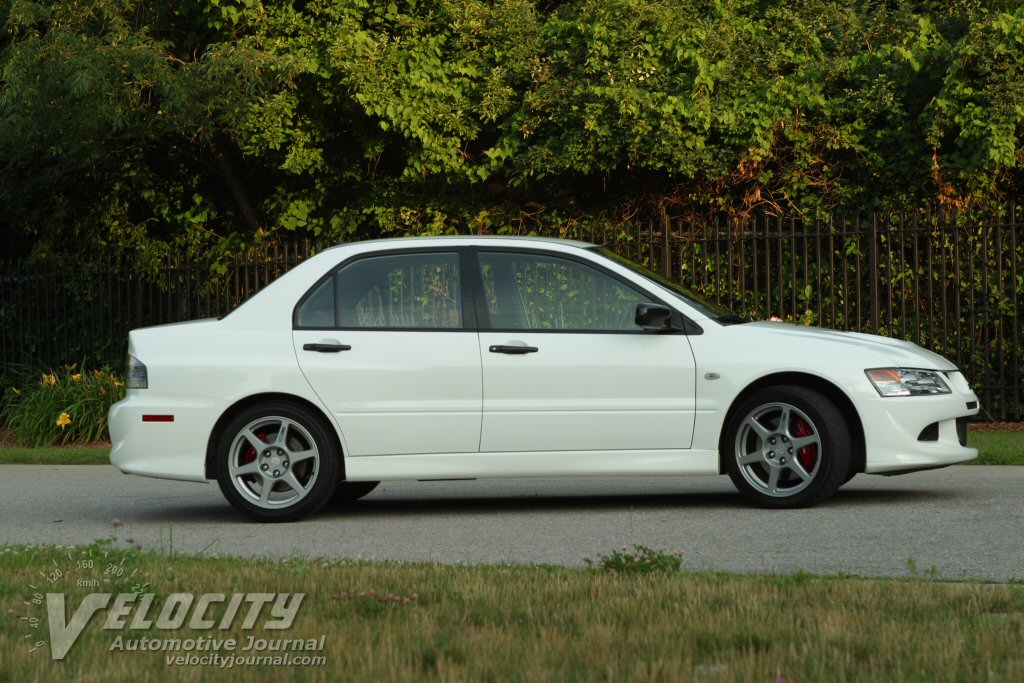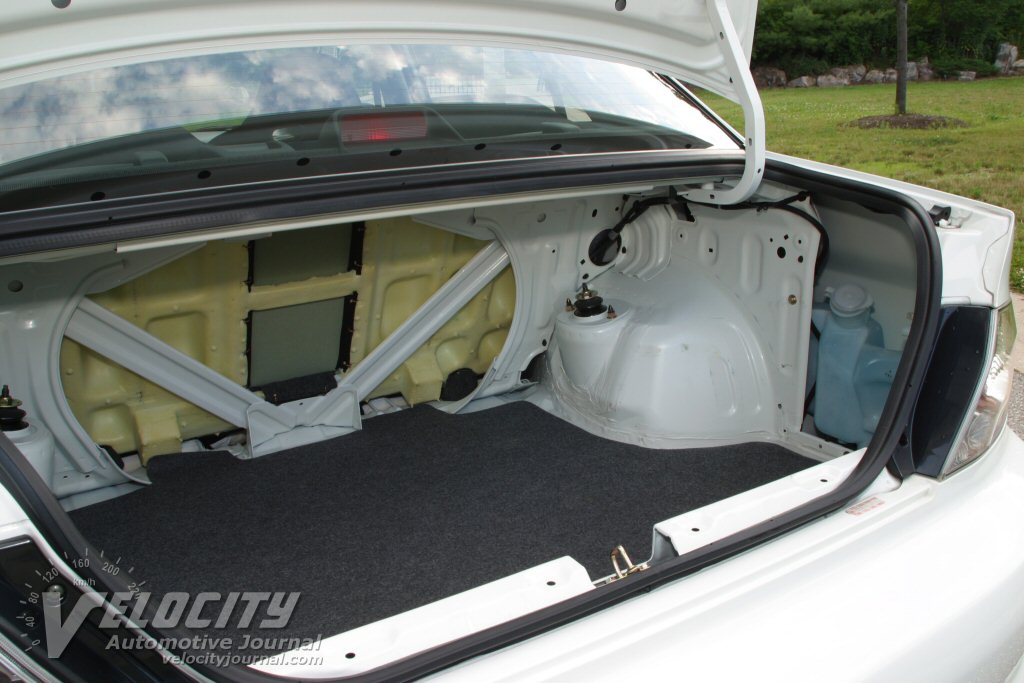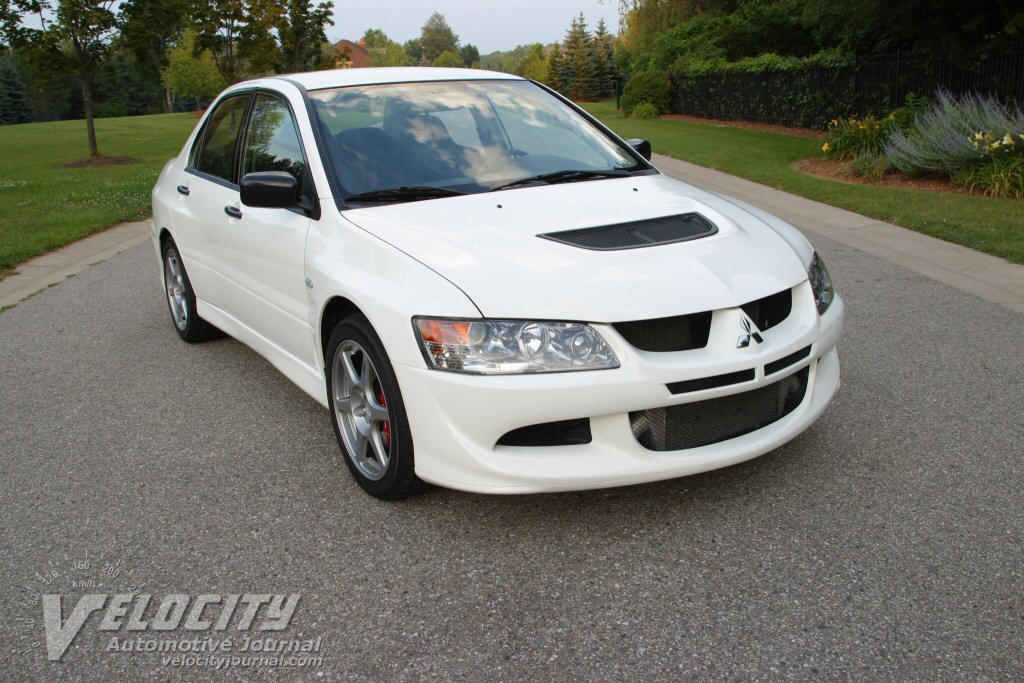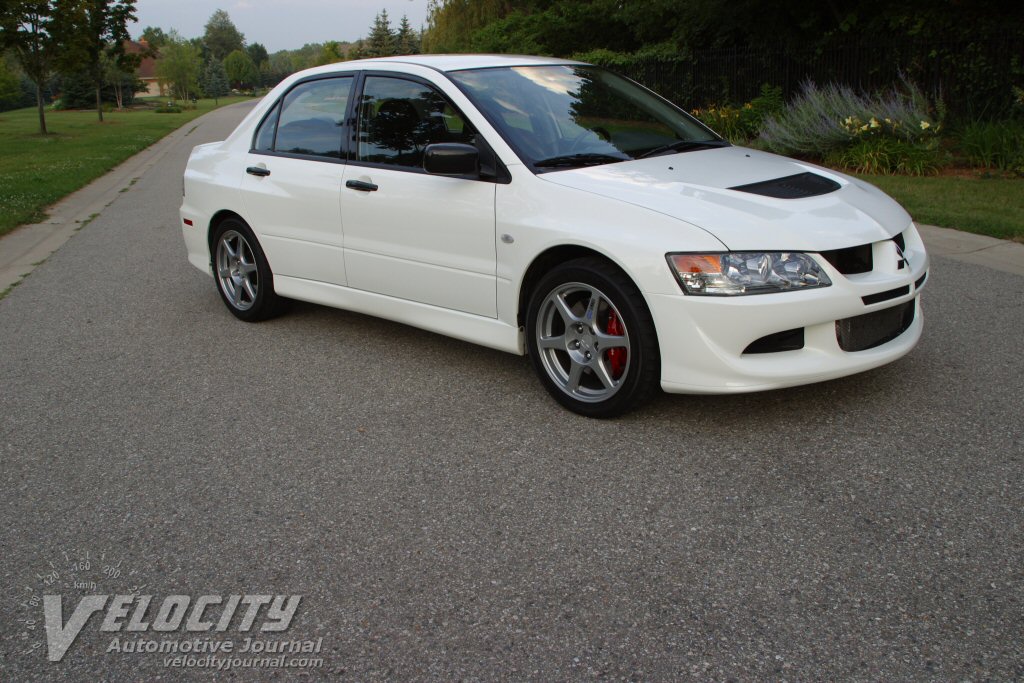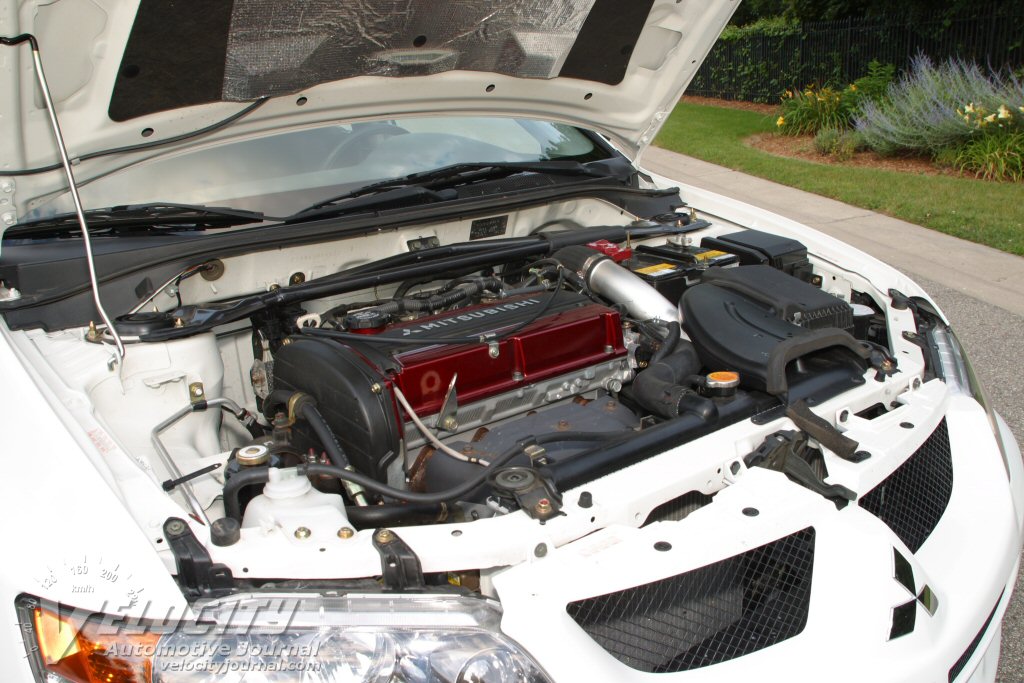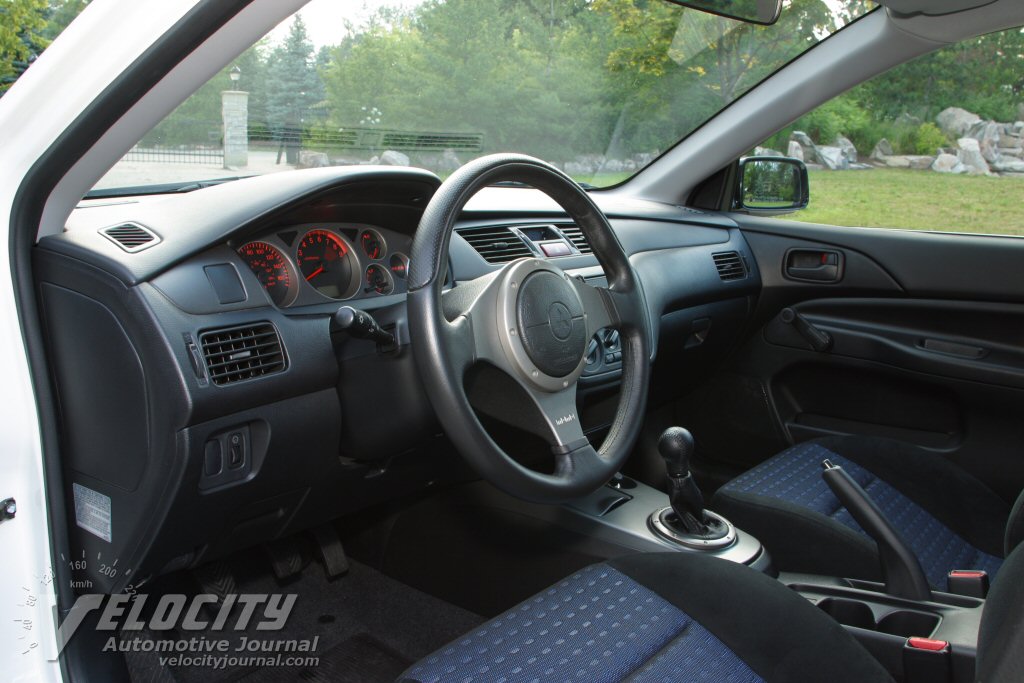2004 Mitsubishi Lancer Evo RS
07/15/2004
Shahed Hussain
An Evo for the hard-core enthusiast sums up the Lancer EVO RS. Why? Because the RS has no radio, no A/C, no power windows/locks/mirrors, and minimal sound insulation.
There is nothing luxurious or fancy about the Lancer interior. Spartan and functional are the best description for the interior. Despite the turbocharged motor, there is no boost, oil pressure, or oil temperature gauge. Warning lights are the only indication if anything goes wrong.
The high point of the interior are the superb Recaro front seats, upholstered in blue and black fabric. The seats cocoon the driver and provide excellent support in all driving conditions. The Recaros have slots near the headrest to allow a racing-type 5-point harness. Six-foot tall passengers should be comfortable in the surprisingly generous rear seat accommodations. All Lancers have ample legroom and headroom (especially since no sunroof is offered in the RS).
Interior noise is a definite weakness of the Evo RS. Rear passengers will complain of excessive road and tire noise. This is no surprise since nearly all the trunk insulation has been removed in the interest of lighter weight. Increased noise is not as noticeable in driver's seat. Of course, the driver is probably too busy enjoying the delights of the Evo RS to notice (or care) much.
Exterior styling is as innocuous as possible. The RS has no rear wing (available on the standard Evo) or extravagant graphics. At first glance, the performance potential of the Lancer Evo RS is not immediately obvious. Upon close examination, the hood vent, front fascia scoops, low profile tires, and Brembo brakes reveal that the RS is no ordinary Lancer. However, the test vehicle was painted a nondescript white, which was in keeping with its low profile nature.
AWD and a 271-bhp turbocharged engine are the ingredients for all sorts of highly illegal fun. Below 3000 RPM, the 2.0L turbo behaves like an economy car inline-4, but the real fun begins above 3000 RPM, where the EVO RS just takes off like a rocket. Once the engine is on boost, the power doesn't flatten until the 7000 RPM redline.
A close ratio 5-speed manual keeps the Evo RS in its powerband. A 6th gear would ease highway cruising. Moderate clutch effort, coupled with smooth engagement allows the Evo RS to be launched from a standstill easily. The short gearing will cause the car to lurch if the driver closes the throttle abruptly. The shift lever engages gears without effort, and can be shifted quickly without balking.
Gummy Yokohama Advan tires are well matched to the superbly balanced chassis. AWD ensures that torque steer is non-existent, but one can feel the front tires grabbing for traction under acceleration. The Evo RS corners with no understeer. Just point the car into a corner and it goes where it is directed. The handling limits are so high that it takes real effort to approach them in street driving.
Steering effort is moderately heavy, which is preferable, since the quick steering ratio makes the Evo RS somewhat twitchy over bumps, and at speed. The RS will make the driver pay attention or risk ending up in the next lane. This is not to say that the RS is difficult to drive; it just requires an attentive and competent pilot.
Spring rates and shock damping are very firm, but not quite harsh. This suspension tuning does make the RS less than ideal for long distance trips. The Evo RS stays planted and stable in most circumstances. Large bumps will upset chassis balance, since the RS is relatively light.
Few cars short of a Impreza STi, Corvette, or Mustang Cobra offer comparable acceleration. None can touch the EVO RS base price. Granted, the RS has far fewer creature comforts, but it makes no apologies for its mission as a street legal racer.

